Orality is the fastest growing movement in evangelism today, and it is changing the face of missions around the world. The rapidly reproducing disciple-making and church planting movements are among oral cultures in Asia, Africa and Latin America. Increasing numbers of churches and ministries in North America are also realizing the importance and impact of Orality-based methods in sharing our faith and making disciples, anywhere, with any people group.
While Orality methods and strategies are amazingly effective ways of communicating the Gospel and making disciples, they also enhance efforts in relationship building and developing community. Simplicity and reproducibility are key factors that make these methods universal and transferable into any culture around the world.
According to the International Orality Network, more than 70% of the world’s population (5.7 billion people) are oral learners, by necessity or by preference — people who can’t, don’t or won’t read, or prefer to learn and communicate by means other than print-based media or written instruction. Oral learners communicate through methods such as storytelling, drama, songs, poetry, parables, proverbs and other oral arts. Ironically, an estimated 90% of the world’s Christian workers present the gospel using literate—not oral—communication styles. In order to reach and disciple oral learners, we must learn to use the strategies that are familiar and relevant to them.

